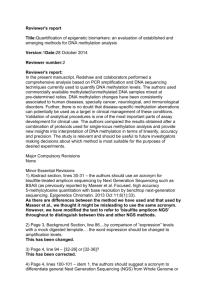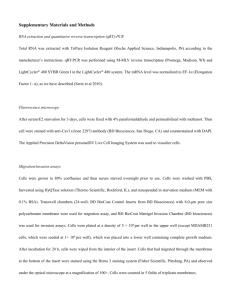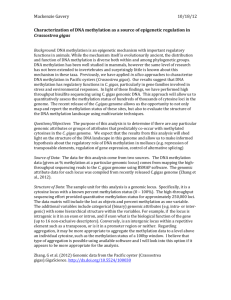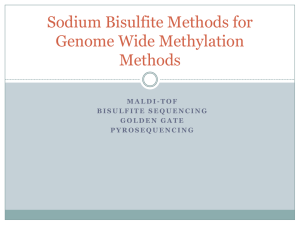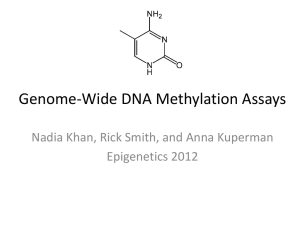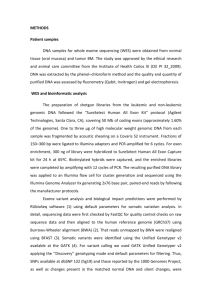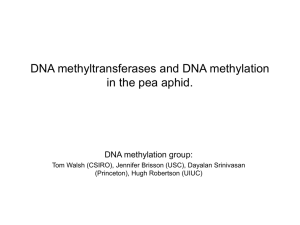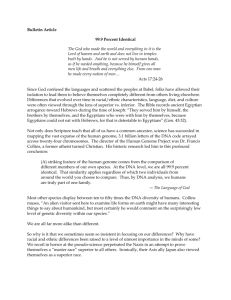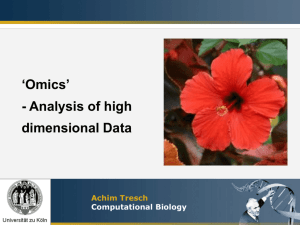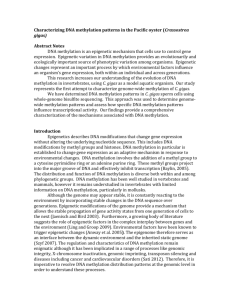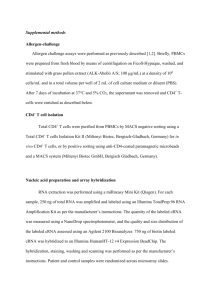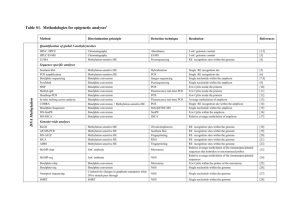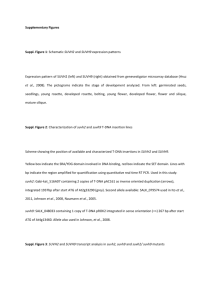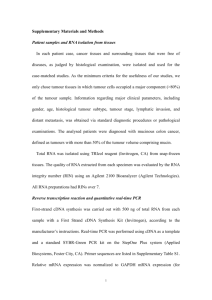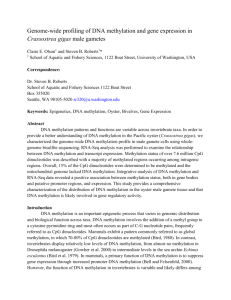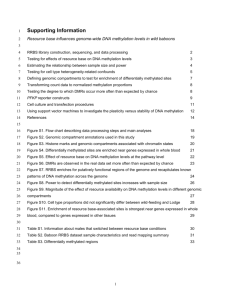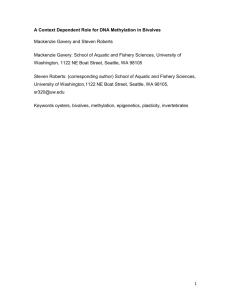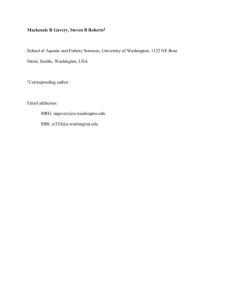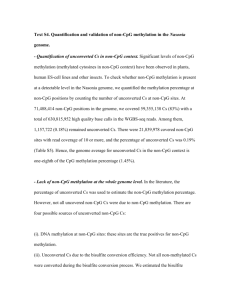Claire_workingms_GonadMethylation 170KB Mar
advertisement
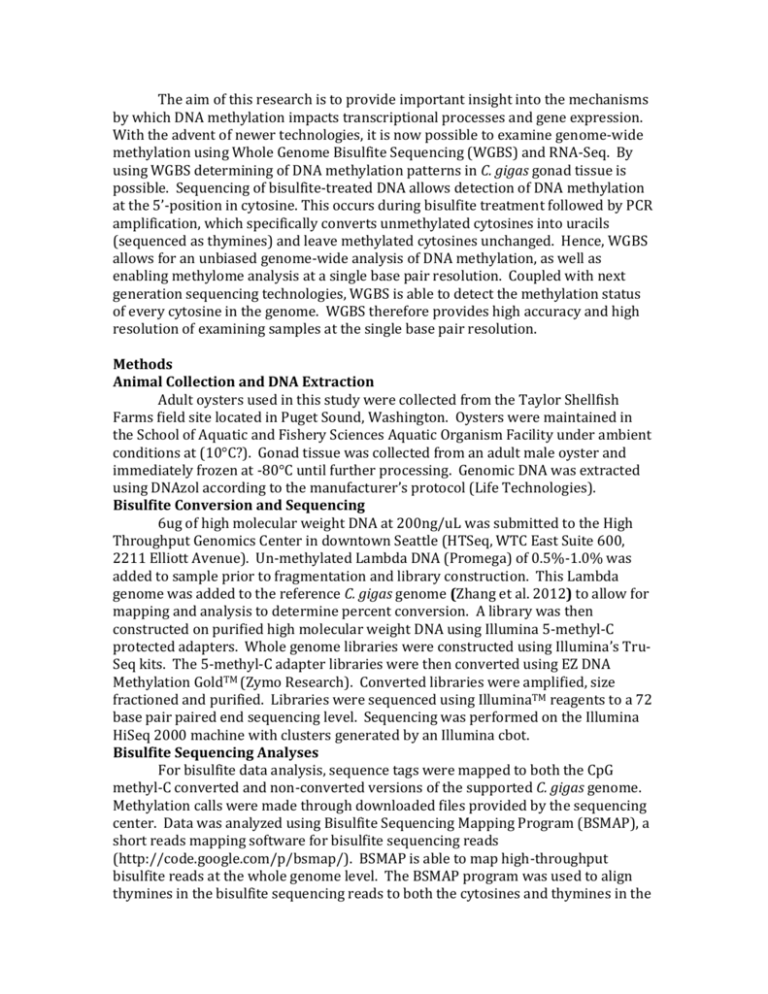
The aim of this research is to provide important insight into the mechanisms by which DNA methylation impacts transcriptional processes and gene expression. With the advent of newer technologies, it is now possible to examine genome-wide methylation using Whole Genome Bisulfite Sequencing (WGBS) and RNA-Seq. By using WGBS determining of DNA methylation patterns in C. gigas gonad tissue is possible. Sequencing of bisulfite-treated DNA allows detection of DNA methylation at the 5’-position in cytosine. This occurs during bisulfite treatment followed by PCR amplification, which specifically converts unmethylated cytosines into uracils (sequenced as thymines) and leave methylated cytosines unchanged. Hence, WGBS allows for an unbiased genome-wide analysis of DNA methylation, as well as enabling methylome analysis at a single base pair resolution. Coupled with next generation sequencing technologies, WGBS is able to detect the methylation status of every cytosine in the genome. WGBS therefore provides high accuracy and high resolution of examining samples at the single base pair resolution. Methods Animal Collection and DNA Extraction Adult oysters used in this study were collected from the Taylor Shellfish Farms field site located in Puget Sound, Washington. Oysters were maintained in the School of Aquatic and Fishery Sciences Aquatic Organism Facility under ambient conditions at (10°C?). Gonad tissue was collected from an adult male oyster and immediately frozen at -80°C until further processing. Genomic DNA was extracted using DNAzol according to the manufacturer’s protocol (Life Technologies). Bisulfite Conversion and Sequencing 6ug of high molecular weight DNA at 200ng/uL was submitted to the High Throughput Genomics Center in downtown Seattle (HTSeq, WTC East Suite 600, 2211 Elliott Avenue). Un-methylated Lambda DNA (Promega) of 0.5%-1.0% was added to sample prior to fragmentation and library construction. This Lambda genome was added to the reference C. gigas genome (Zhang et al. 2012) to allow for mapping and analysis to determine percent conversion. A library was then constructed on purified high molecular weight DNA using Illumina 5-methyl-C protected adapters. Whole genome libraries were constructed using Illumina’s TruSeq kits. The 5-methyl-C adapter libraries were then converted using EZ DNA Methylation GoldTM (Zymo Research). Converted libraries were amplified, size fractioned and purified. Libraries were sequenced using IlluminaTM reagents to a 72 base pair paired end sequencing level. Sequencing was performed on the Illumina HiSeq 2000 machine with clusters generated by an Illumina cbot. Bisulfite Sequencing Analyses For bisulfite data analysis, sequence tags were mapped to both the CpG methyl-C converted and non-converted versions of the supported C. gigas genome. Methylation calls were made through downloaded files provided by the sequencing center. Data was analyzed using Bisulfite Sequencing Mapping Program (BSMAP), a short reads mapping software for bisulfite sequencing reads (http://code.google.com/p/bsmap/). BSMAP is able to map high-throughput bisulfite reads at the whole genome level. The BSMAP program was used to align thymines in the bisulfite sequencing reads to both the cytosines and thymines in the C. gigas reference genome. Parameters used for BSMAP included query a and b files, reference sequences file, and an output alignment file. Output data from BSMAP was run through the Python methratio program (methratio.py in BSMAP), using a Python script to extract methylation ratios from BSMAP mapping results. Output contained information such as chromosome, chromosome location, strand (positive or negative), methylation ratio, number of converted and unconverted cytosines covering this locus, and lower and upper bound of 95% confidence interval of methylation ratio. Methylation coverage and additional information was determined using Galaxy (https://main.g2.bx.psu.edu). Analyzed data had 5 times coverage and contained CpGs that were at least 50% methylated. The BEDtools utility (http://code.google.com/p/bedtools/) and SQLShare (http://escience.washington.edu/sqlshare) were used to examine relationships in genomic features. Results A total of 85 million paired end and 32.4 million single end reads were aligned to the C. gigas reference genome using BSMAP software. A total of 1.09 million methylated CpGs were identified in the C. gigas epigenome and 2.93 million unmethyalted CpGs. The C. gigas gonad was therefore 27.26% methylated.
